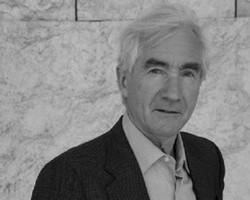Name John Onians Role Professor | ||
 | ||
Books Bearers of Meaning, Classical Art and the Cultures, Art - Culture and Nature: Fr, Art and thought in the Helle, Atlas Mundial del Arte | ||
Secrets of a european neuroarthistory by john onians
John Onians, FSA (born 1942) is Professor Emeritus of World Art at the University of East Anglia, Norwich and specialised in architecture, especially the architectural theory of the Italian Renaissance; painting, sculpture and architecture in Ancient Greece and Rome; Byzantine art, material culture, metaphor and thought; perception and cognition, and the biological basis of art. His recent work has been instrumental in the establishment of Neuroarthistory as a distinct set of methodologies.
Contents
- Secrets of a european neuroarthistory by john onians
- Neuroarthistory an introduction with john onians
- Early life and education
- Career
- References
He is the son of the distinguished classicist, Richard Broxton Onians.
Neuroarthistory an introduction with john onians
Early life and education
Onians is graduate of the University of Cambridge, and of the Courtauld Institute of Art and Warburg Institutes of the University of London, at the latter of which he was a PhD student in History of Art, of Ernst Gombrich. He had also received postgraduate diploma in the History of European Art from London University.
Career
He was Founder Editor of the journal Art History in 1978. He was professor of Visual Arts and Director of the World Art Research Programme at the University of East Anglia from 1971 until his retirement in 2007 where he was instrumental in the development of the Art History department, and the creation of the School of World Art Studies and Museology.
He has authored four books Art and the Thought in the Hellenistic Age, Bearers of Meaning, Classical Art and the Cultures of Greece and Rome, and Neuroarthistory: From Aristotle and Pliny to Baxandall and Zeki (2008). He has edited Sight and Insight, Atlas of World Art, and Compression Vs. Expression.
Onians has been discussed in books such as Art History and its Methods (1995) and Raising the Eyebrow (2002).
